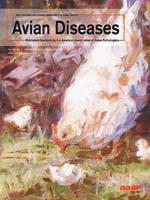Major outbreaks of avian type C botulism have been rarely reported from Central Europe. In this paper, we report the first severe outbreak of avian type C botulism in Poland. In 2011–12, two epizootics caused by Clostridium botulinum took place at Jeziorsko dam reservoir and affected an estimated number of 5500 birds in 2011 and 1600 birds in 2012. In total, 24 species of waterbirds were affected, including mainly waterfowl (37.0%), shorebirds (27.0%), rallids (25.7%), and larids (9.1%). Mallards (Anas platyrhynchos) and coots (Fulica atra) were most commonly represented among all affected species (27.5% and 25.0% of all recorded carcasses, respectively). Laboratory analyses confirmed the presence of type C botulinum toxin in the internal organs of paralyzed birds. This case study from the Jeziorsko dam reservoir demonstrates that this type of shallow-water habitat is especially prone to avian botulism outbreaks in the climatic conditions of Central Europe.
Reporte de Caso—Primer caso de un brote severo de botulismo aviar del tipo C en Polonia.
Brotes severos de botulismo aviar tipo C se han comunicado raramente en Europa Central. En este trabajo, se presenta el primer brote grave de botulismo aviar tipo C en Polonia. Entre los años 2011 al 2012, dos epizootias causadas por Clostridium botulinum se presentaron en la presa reservorio de Jeziorsko y afectaron a un número estimado de 5,500 aves en el 2011 y a 1,600 aves en el 2012. En total, 24 especies de aves acuáticas se vieron afectadas, principalmente se incluyen aves acuáticas (37.0%), aves costeras (27.0%), rálidos (25.7%) y láridos (9.1%). Ánades reales (Anas platyrhynchos) y fochas comunes (Fulica atra) estuvieron representados con mayor frecuencia entre todas las especies afectadas (27.5% y 25.0% de todas las canales registradas, respectivamente). Los análisis de laboratorio confirmaron la presencia de la toxina botulínica de tipo C en los órganos internos de aves paralizadas. Este estudio de caso de la presa Jeziorsko demuestra que este tipo de hábitat de aguas poco profundas es especialmente propenso a brotes de botulismo aviar en las condiciones climáticas de Europa Central.





